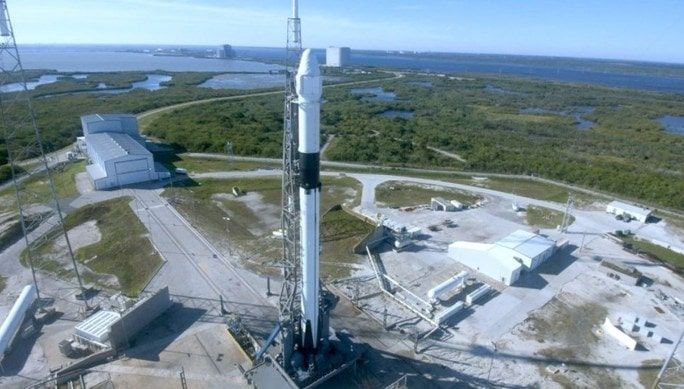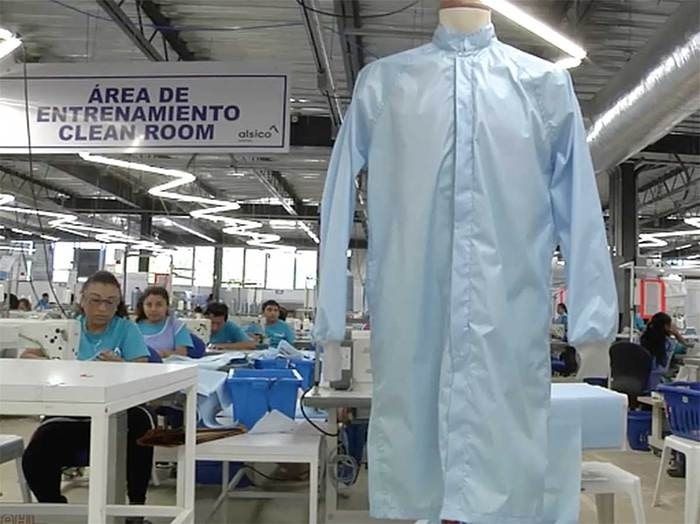NASA launches the Mexican 'AztechSat-1' nanosatellite into outer space
Mexican Space Agency (AEM), a decentralized agency of the Secretariat of Communications and Transport (SCT) of Mexico, said that this fact marks the beginning of a new era in space development.

In Cape Canaveral, Florida, in the United States, this morning took off the spaceship "Dragon", powered by a rocket "Falcon 9" that carries the nanosatellite "AztechSat-1". It is the first Mexican manufacturer to launch into orbit from the International Space Station (ISS).
Through a statement, the Mexican Space Agency (AEM), a decentralized agency of the Secretariat of Communications and Transport (SCT) of Mexico, said that this fact marks the beginning of a new era in space development in the country. The device is part of the supply mission of the International Space Station "CRS-19" of the company "SpaceX".
The project has its origin in a collaboration agreement which establishes that the EMP will deliver to the National Aeronautics and Space Administration (NASA) a CubeSat of one unit (10 cubic centimeters and one kilogram of weight) "to demonstrate technical capability in space communications of common interest to Mexico and NASA.
In two or three days, the WEA explained, the "Dragon" capsule will unload the satellite onto the International Space Station.
The Mexican agency reported that NASA provided technical advice to design, build, test, and operate the satellite, as well as facilities to perform environmental and space flight qualification tests, and covered the costs of its launch to the International Space Station.
The objective is to validate a possible communication between "AztechSat-1" and the constellation of Globalstar communications satellites to, in the future, improve the control and operation of picosatellites.
The development of the nanosatellite was coordinated by the AEM with the Universidad Popular Autónoma del Estado de Puebla (UPAEP), which designed, developed, tested, and operated with the participation of students and professors.
AztechSat-1" is the first Mexican satellite to be launched from the International Space Station and marks the beginning of a new era in Mexico's space development, the bulletin said.
The development of the device was carried out by a multidisciplinary team of UPAEP students and professors, advised by a mentor team made up of specialists from AEM and NASA.
The team developed the project following NASA's Space Systems Engineering methodology, which allowed the project to be carried out promptly and according to previously specified quality standards and passed environmental tests in NASA's laboratories.
Yucatan dresses NASA scientists
From Yucatan, in the Alsuco Mexico plant, coveralls, shirts, coveralls, jackets are made; they use special fabrics; free of static with quality standards for the Space Agency (NASA).

The plant in Valladolid has investment from Belgium, with representation in 20 countries and unique in Mexico. Every week, uniforms are sent to NASA.
The president of Alsico Mexico, Adrián Carabias, commented that quality of work is paramount, "in sewing there can be no margin for error, which is why the staff is trained. Currently, the plant has been in the region for a year. "
The place works mainly two materials for the uniforms of the NASA they use the fabric "Cleaning room", of polyester and polycarbonate, and with special suits for firefighters use the fabric "Five retardant" which turns to ash in contact with the fire, and it does not stick to the skin. In addition, a prototype of uniforms for the Army of the United States is created.
The investment of this place was 52 million pesos and there is a capacity to generate 500 new jobs; The company has a short-term project to open a nursery and lactation for working mothers and also create a new factory near the capital.
The workers of the sewing area earn up to 1,700 a week, work from Monday to Friday, and have transportation support to return them to their community.
Carabinas said that "fortunately they decided on Yucatan, for its people, who work very well, as well as its geographical location, because you are near Puerto Progreso, Cancun, where people come to visit us from other parts of the world," he said.




